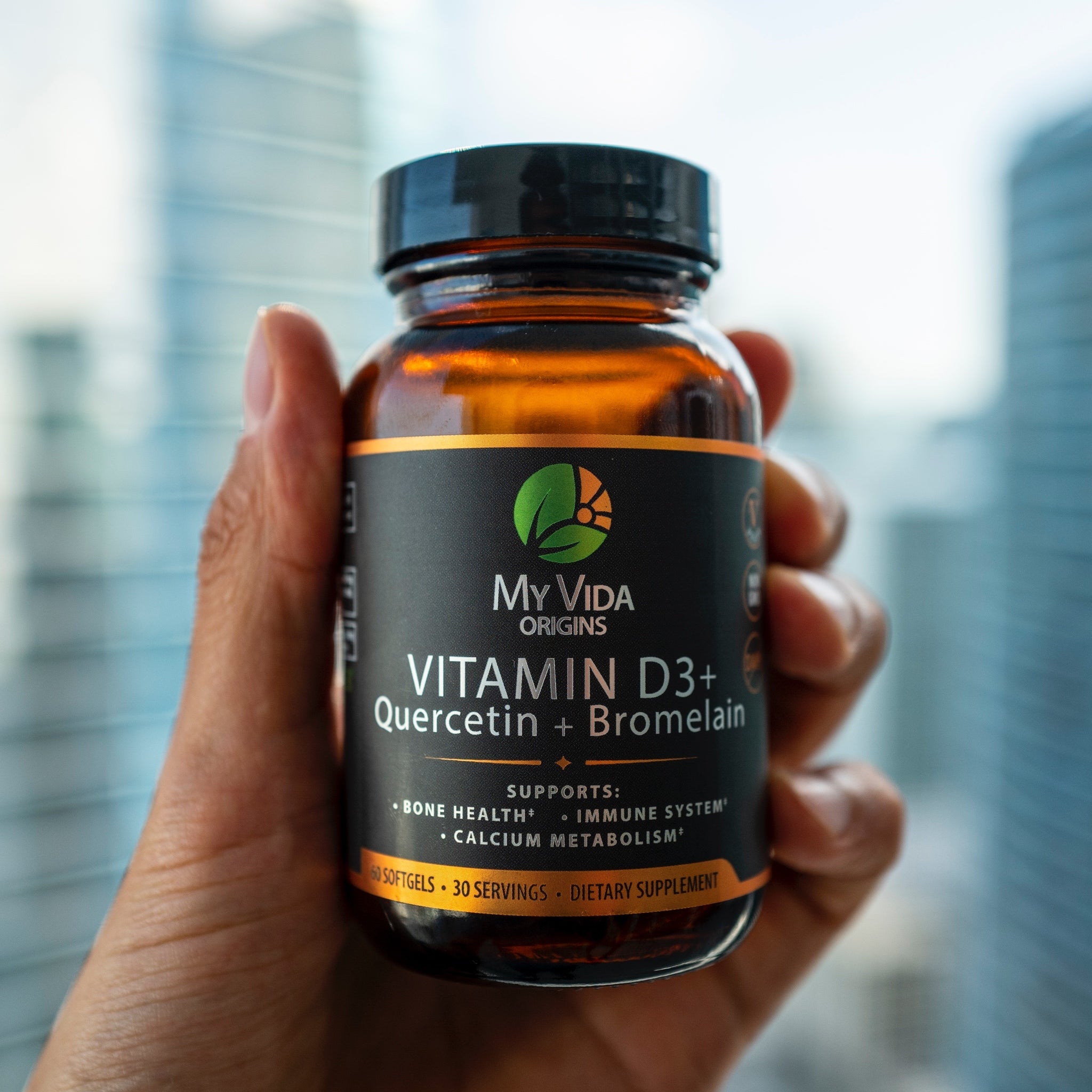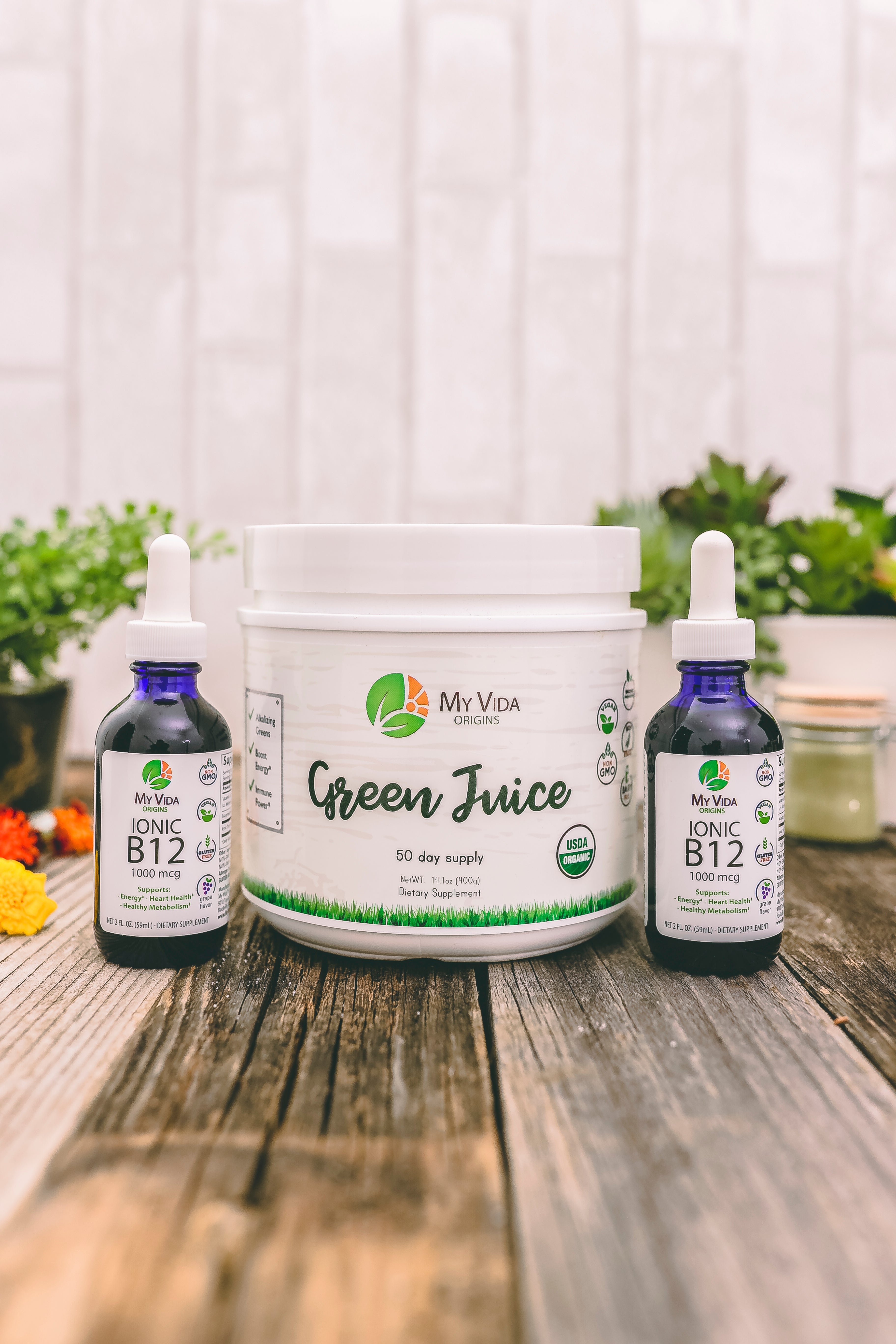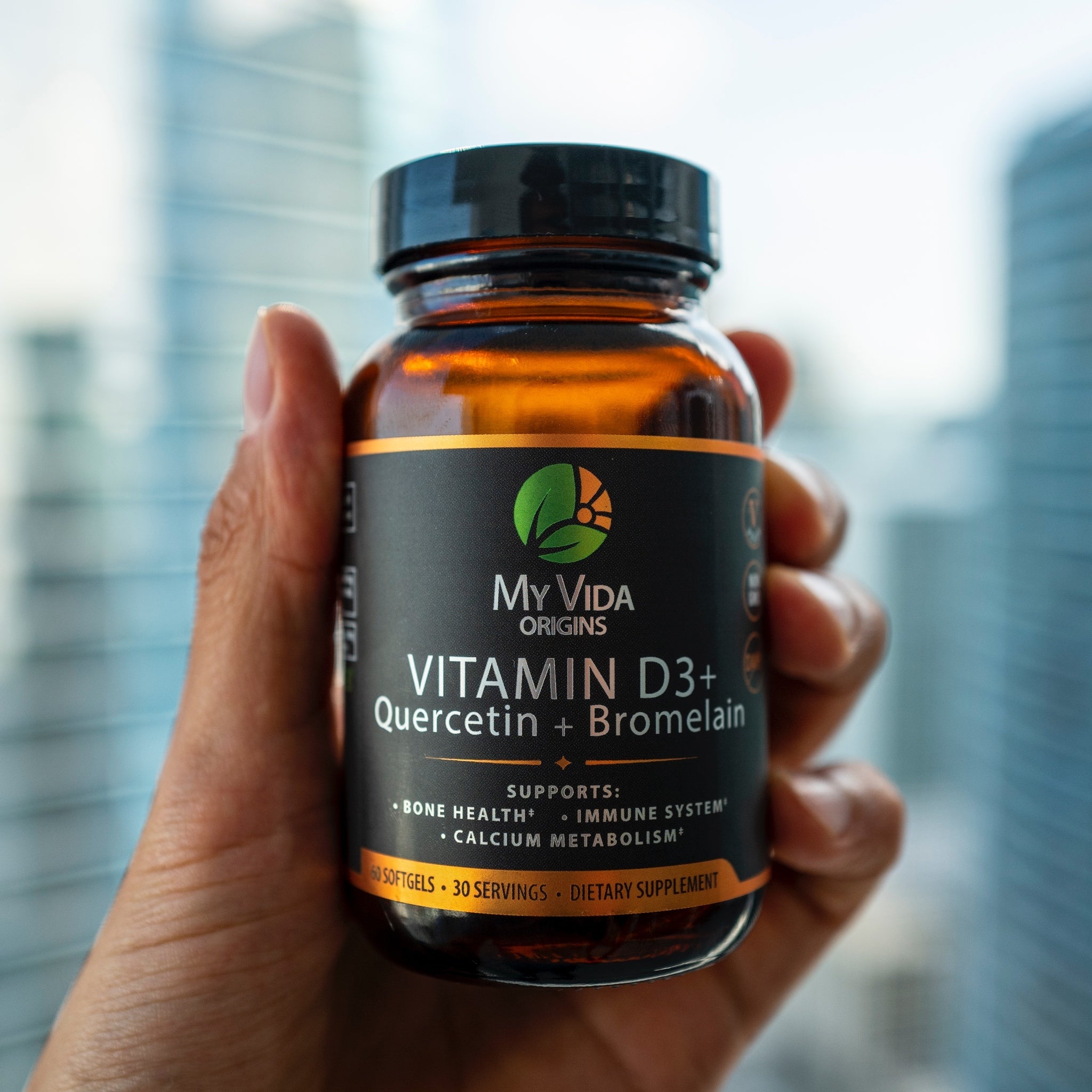
Vitamin D3 Deficiency: Everything You Need To Know

There are over one billion people on this planet who are vitamin D deficient, and it sounds like a big deal. Why is vitamin D, also known as the sunshine vitamin so important for your body? Maybe you’ve heard it helps with your bone health, your immune system, and even calcium getting involved. Other common vitamin D discussions include topics such as sun exposure, risks of skin cancer, and how much vitamin D is adequate for your body. Did you also know that our liver and kidneys play a huge role in vitamin D synthesis? It is very common to see many people with vitamin D deficiency and questions such as how do we get adequate amounts inside our body?
What is Vitamin D?
One of the main characteristics of vitamin D is that it's a fat-soluble vitamin, meaning that it dissolves in fats in the diet and is stored in our body’s fatty tissues and the liver. Compared to vitamin C, which is a water-soluble vitamin, fat-soluble vitamins tend to accumulate more in the body. Fat-soluble vitamins such as vitamins A, D, E, and K are found in meats, plants, and dietary supplements.
There are many compounds that belong in the vitamin D family. They all have similar functions but by far the most important one is vitamin D3, also known as Cholecalciferol. While vitamin D2 comes from plant sources like mushrooms, vitamin D3 comes from animal sources such as salmon. Cholecalciferol is also naturally made by our body in response to sunlight.
Vitamin D3 Mechanism

When the UV light comes down and hits the first layer of our skin (epidermis), a compound called 7-Dehydrocholesterol within the epidermis gets converted to vitamin D3. So in theory, we could get all the vitamin D3 we need from UV exposure. Vitamin D can also be produced in our bodies with foods and supplements. We can find some in fatty fish, fish oil, orange juice, dairy products, and so on.
While the foods and supplements we ingest are absorbed by the intestines first, vitamin D3 from the sun is carried to the liver via the bloodstream. Once it reaches the liver, it turns into calcitriol, a form of vitamin D. Then, it's taken to the kidneys through the bloodstream, where it is transformed into another form called calcitriol, an active hormone.
This active form of vitamin D3 travels back to the small intestines to perform its primary functions. The presence of calcitriol increases the number of calcium-binding proteins in the small intestines. The cells of the small intestines absorb nutrients from the foods we eat, so the dairy products that we consume and the calcium it contains is absorbed with the help of vitamin D3. It is all about getting more calcium into the bloodstream which helps with bone mineralization. Other potential effects of vitamin D include anti-inflammatory functions in the immune system and inhibition of cancer cells.
What Causes Vitamin D3 Deficiency?
1. Lack of Sun Exposure
It is difficult to get vitamin D3 purely from our diet, which is why we are heavily reliant on sun exposure or supplements to get enough vitamin. Ten minutes of daily exposure to sunlight can provide up to 25 mcg or 1,000 IU (International Units) of vitamin D, an FDA-recommended dose for adults. Practically, we would think that is easy to achieve, however, there are many variables to consider. Here are some conditions that would allow us to receive 1,000 IU of vitamin D3 via sunlight on a daily basis:
- You live close to the equator
- You are not overweight or obese
- You are young
- You have lighter-colored skin
- You go outside during the day
- You don’t have a defect with your vitamin D receptors
- You have a healthy liver
As you can tell, these conditions might not apply to everyone in the world, thus, the duration of sun exposure that is needed varies for different demographics. There are many people who are vitamin D deficient simply due to where they live in the world. Think of someone living in the northern hemisphere where the days are shorter, they’re indoors most of the time and they don’t receive a ton of sunlight. In this situation, vitamin D synthesis ceases for those people, especially in the winter, making them heavily reliant on diet or supplementation.
2. Being Overweight or Obese

Surprisingly, there is a correlation between obesity and lack of vitamin D in the body, and this is a well-documented finding. According to UCHealth, the prevalence between the two is as high as 90%.
As mentioned above, vitamin D is fat-soluble, which means that it dissolves in fats and is stored in our body's fatty tissues. For people with high body fat content, vitamin D is "trapped" in the fat and is unable to make its way to circulate in the blood. For example, if we have two subjects on the same diet, but subject A's BMI is 23 while the other's is 31 or over, the amount of vitamin absorbed in Subject A is higher than that of Subject B. As a result, Subject B is now faced a higher risk of vitamin deficiency.
3. Inefficient Production of Vitamin D3 in the Skin

Another cause of low vitamin D levels in the body lies in the skin's inability to produce an adequate amount of vitamins. People of color and the elderly are at higher risk of vitamin D deficiency.
People of Color
Research suggests that for people with darker skin tones, the pigment in their skin blocks sunlight absorption, leading to ineffective vitamin D production. In a 2013 research published in the New England Journal of Medicine, it is reported that Black people have a lower level of both vitamin D and vitamin D binding proteins, preventing them from getting enough vitamins.
People of Old Age
Furthermore, older adults are more prone to vitamin d deficiency due to the fact that aging hinders calcitriol, an active form of vitamin D. Studies done by the National Institutes of Health show that the production of calcitriol is reduced by 50% due to age-related decline in renal function, leading to a decrease in calcium absorption.
What Happens if I Have Low Vitamin D3 Levels?

It's rare to actually see symptoms in the early stages until we get severe vitamin D deficiency. People with mild to moderate deficiency rarely notice their symptoms without proper testing. But as the deficiency becomes more prolonged or severe, the symptoms often manifest in the bones. Subtle signs of vitamin D deficiency in adults include fatigue, bone pain, muscle weakness, and mood changes. This is when medical professionals usually recommend taking vitamin D supplements.
As we discussed earlier, the presence of vitamin D3 in our body helps increase our calcium absorption. Thus, when we don’t have enough vitamin D, we’re not going to be able to absorb calcium into the bloodstream. What happens instead is that the calcium we need gets pulled from the storage in our bones. Consequently, our bones become weaker, we get prone to fractures, and bone pains, and in serious cases, have higher risks of Osteomalacia, a disease that causes softening of bone tissues. Severe cases of vitamin D deficiency in children can also lead to Rickets, which can lead to symptoms such as incorrect growth patterns due to bowed or bent bones, deformities in joints, and bone pain.
Solutions for Vitamin D3 Deficiency

Although we cannot get enough vitamin D solely from our diet, it's still medically advised that we keep a healthy diet that provides us with an adequate source of vitamins. Vitamin D-rich food includes egg yolks, fatty fish such as salmon, and cheese. If you are a vegetarian or a vegan, you can opt for mushrooms, almonds, and fortified foods such as tofu and milk substitutes.
2. Increased Sun ExposureGetting enough sunlight is undoubtedly one of the most efficient ways to increase your body's vitamin D levels. This doesn't just mean going out and sunbathing. If you have the means, you can take advantage of various outdoor activities such as swimming, hiking, or going on a walk.
3. Vitamin D SupplementationVitamin D supplementation is commonly used to treat adults with severe cases of vitamin D deficiency, which is comprised 42% of the U.S. population. If you fall under demographics such as those with insufficient sun exposure, who are obese or elderly, and with conditions that hinder vitamin d absorption and production in their body, taking vitamin D supplements can be beneficial.
My Vida Origin's Vitamin D3 supplement is a highly recommended product to aid vitamin d deficiency. A serving of 2 soft gels a day gets you 50 mcg (or 2,000 IU). General studies show that a consistent intake of 1,000 - 2,000 IU helps achieve an adequate vitamin D level in the blood. Additionally, it supports bone health, boosts the immune system, and enhances calcium metabolism.
Note: It is important to consult a physician before taking any targeted supplements before using supplements, especially if you have a medical condition.
Are you taking TOO MUCH Vitamin D?
On the contrary, it is also common for people to wonder if they are consuming too much vitamin D3 since healthcare providers don't usually order routine checks of your vitamin d levels. Vitamin D3 is consumed way more frequently in the northern part of the world due to less frequent exposure to sunlight. Research has shown very few occurrences of vitamin D 'overdoses' in people, but it is certainly not uncommon.
An analysis conducted by the National Academy of Medicine from 2013 to 2014 showed that 18% of Americans take 1,000 IU of vitamin d3 a day and around 3% take more than 100 mcg or 4000 IU of vitamin D3 a day, which exceeds the FDA-recommended dose. Their research also concluded that exceeding the recommended dose of vitamin D3 (more than 1,000 IU) can lead to potential toxicity in your body such as Hypercalcemia (build-up of calcium in the blood), bone pain, and formation of kidney stones.
Conclusion
All in all, we have learned that vitamin D is a major component of a healthy life. It plays a vital role in promoting healthy and strong bones, muscles, and the immune system. It is not easy to self-assess if we are vitamin d deficient without getting a proper check by a medical professional or until we start showing symptoms. It can take up to years or more to realize a severe vitamin d deficiency, which is why prevention is the best cure.
A healthy diet, proper nutrition, and sunlight exposure go a long way in avoiding any severe cases of vitamin d deficiency. Eating foods such as fatty fish, eggs, mushrooms, and almonds, walking in the sun for at least fifteen minutes, and adding an extra vitamin D supplement (if recommended by a professional) on a daily basis are some of the best ways to get the sunshine vitamin in our body.



